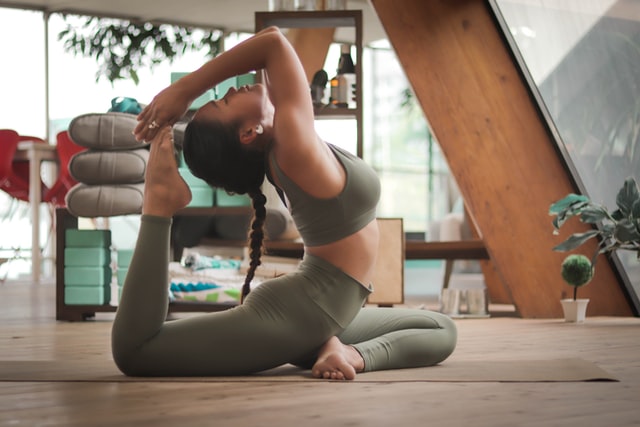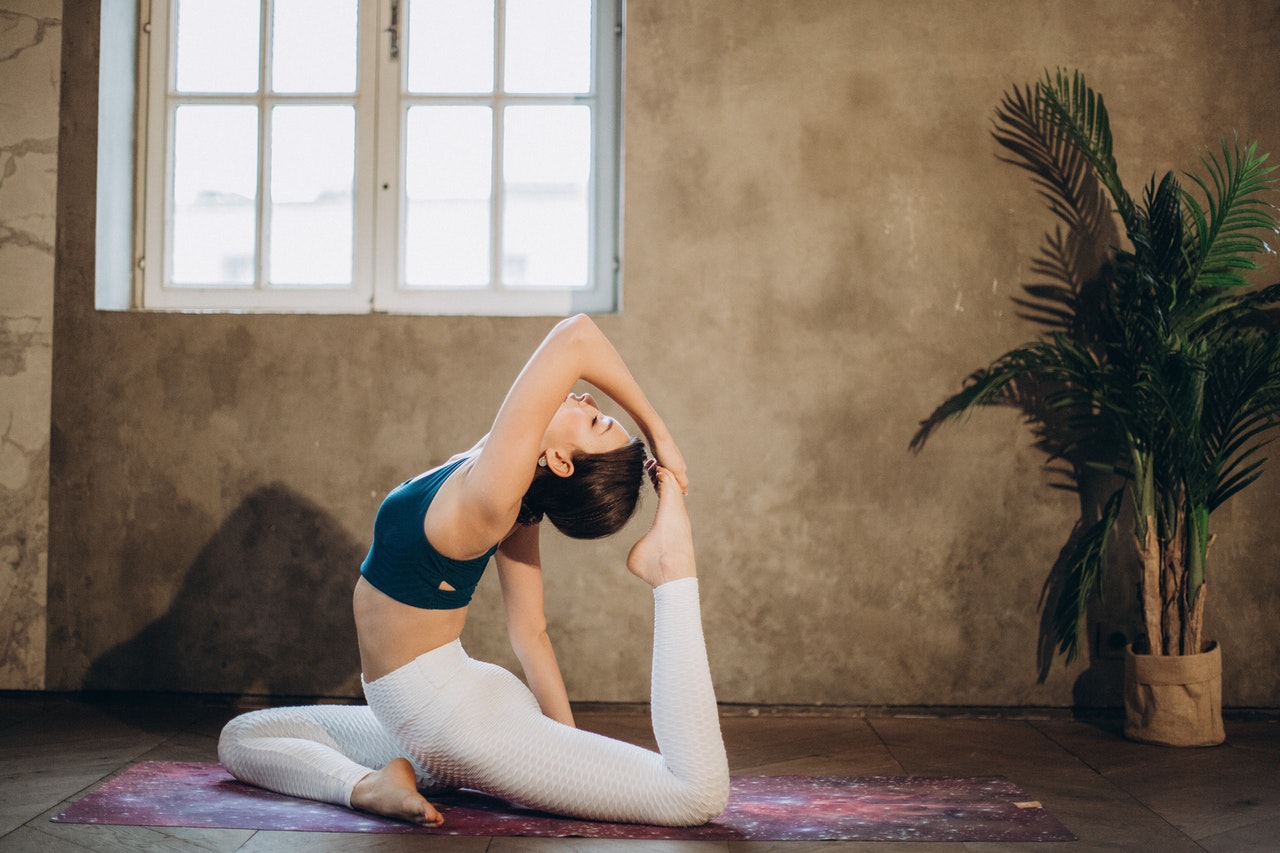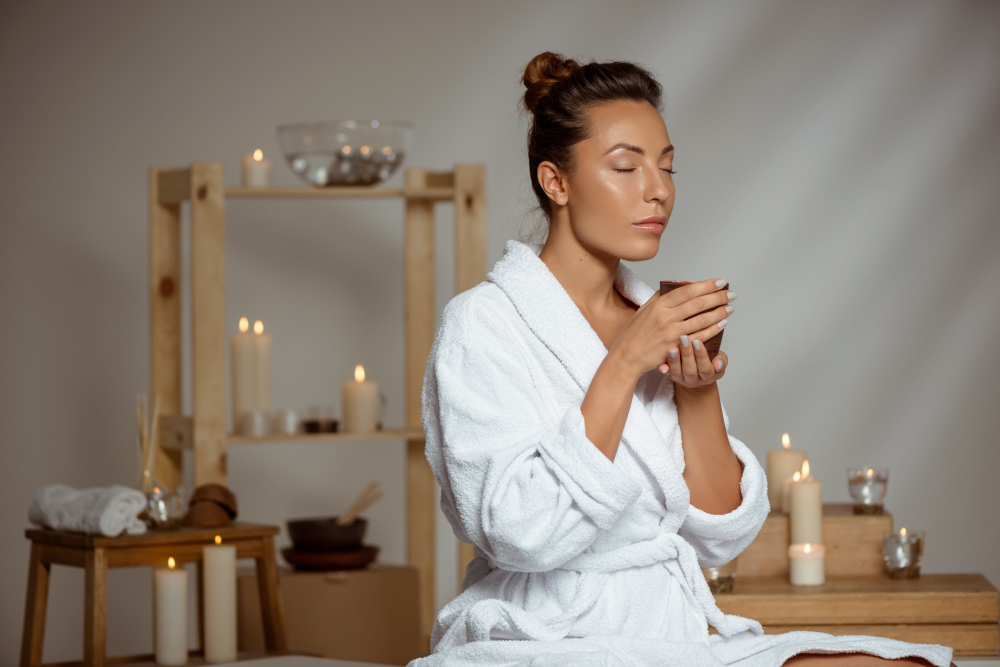Yoga is an ancient practice that has spread internationally throughout the years. It’s not just random postures and stretches. The purpose of yoga is to harmonize the body, mind, and soul. It is done by cultivating self-discipline and self-awareness through physical development and guiding it to find a spiritual purpose. It is transforming a lifestyle with practice and knowledge. In this guide, you will understand the basic elements to integrate them into your practice; it doesn’t matter if you are a beginner or an expert. Yoga is for everyone who is intrigued to explore wellness and the connection with the inner self.
Why Yoga?
As said before, yoga is the connection of the body, emotions, and spirit, so the benefits could be for your physical body and your spirit.
- Physical body benefits: According to the American Osteopathic Association, some of the benefits yoga can bring to your life are flexibility, muscle strength, tone, cardio, and circulatory health, a balanced metabolism, as well as reducing stress, and sleeping problems, and the ability to concentrate.
- Meditation: The main point is to calm your thoughts and connect with yourself in the present moment. Tough right? Not at all! This could allow you to start a meditation which according to Deepak Chopra, offers the most direct path to awakening to your own infinite potential. Integrating meditation into your practice of yoga could decrease your stress levels and connect with your body and spirit.
History of Yoga
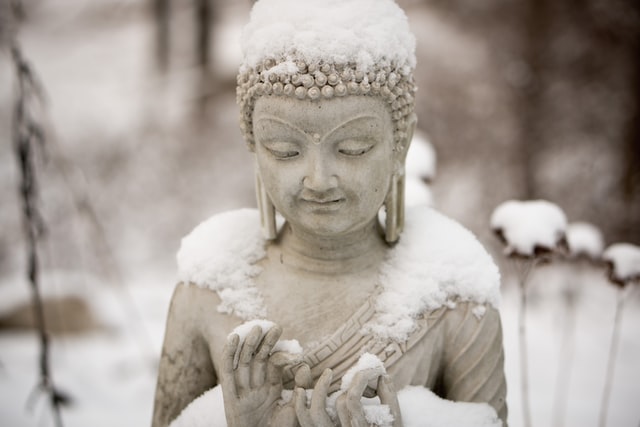
Yoga has been changing through time; it started as a spiritual practice in India around 5,000 thousand years ago. The word “Yoga” was first written in an ancient book called Rig Veda composed by the Vedas in the Indus-Sarasvati civilization; the book had 4 sacred texts written in Sanskrit that talked about hymns and mantras used by the Brahmans, the Vedic Priest. The Brahmans and the Rishis start documenting their practices and beliefs in the Upanishads, a work that contains more than 200 scriptures. The Upanishads, a group of people that followed these scriptures, practiced the sacrifice of the ego, integrating self-knowledge by action (karma) and wisdom (yoga). This period of time was named Pre-Classical Yoga.
In Post-Classical Yoga, the teachers and practitioners focused on the physical body as the channel to achieve enlightenment, yoga masters created systems of practices that included, for the first-time yoga postures, and the main purpose was to rejuvenate the body and prolong life. They developed Tantra yoga which included techniques to cleanse the body and the mind. The exploration of the body, mind, and spirit leads to the creation of Hatha Yoga, one of the most popular yoga practices of today. The Modern Period started around the 1800s when yoga masters began to travel and attracted international followers. The Parliament of Religions in Chicago invited yoga masters of that time, like Swami Vivekananda. After that, Hatha yoga was strongly promoted to the world.
Types of Yoga
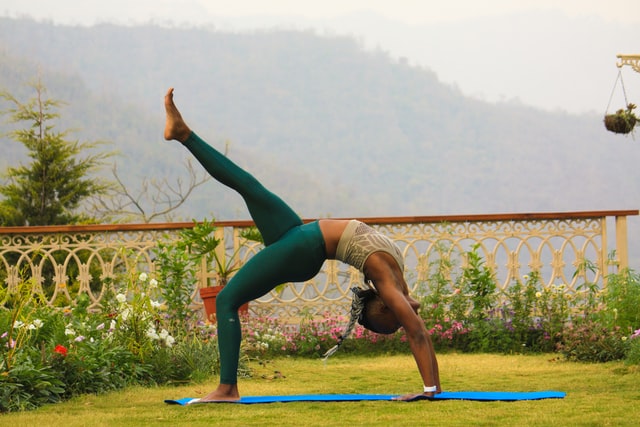
Yoga is very friendly to everybody. For beginners to experts, for kids to elderly people. There are always variations in the practice of yoga, so everyone can join a practice. Even though the vast diversity, the majority includes breathing exercises, meditation, and postures that are called asanas. Some of the types of yoga more popular nowadays are:
- Hatha Yoga: This is normally slower. It focuses on breath and exercise, if you are new to yoga, you could start with this type of practice.
- Vinyasa Yoga: Every practice will be different in Vinyasa as the posture varies with every practice. The sequence will depend on the teacher and the intention they want to transmit. These practices usually have an active rhythm and flow.
- Kundalini Yoga: This practice is more focused on the spiritual. They are normally intense and involve meditation, mantras, and movement.
- Ashtanga Yoga: This is always the same sequence; the postures could be more difficult than other kinds of yoga, so if you already practice yoga, Ashtanga could help you to keep growing your physical limit, but always remember to be careful to prevent injuries.
- Bikram Yoga: the sequence has 26 postures; they are always the same. The practice is in a hot space, so be ready to sweat!
- Yin Yoga: Postures that you have to maintain for a longer period of time can also be very meditative practices.
Keep in mind there are more than 100 types of yoga, the ones mentioned above are the more common or most well-known, not mean, and they are better than others.
Self-awareness
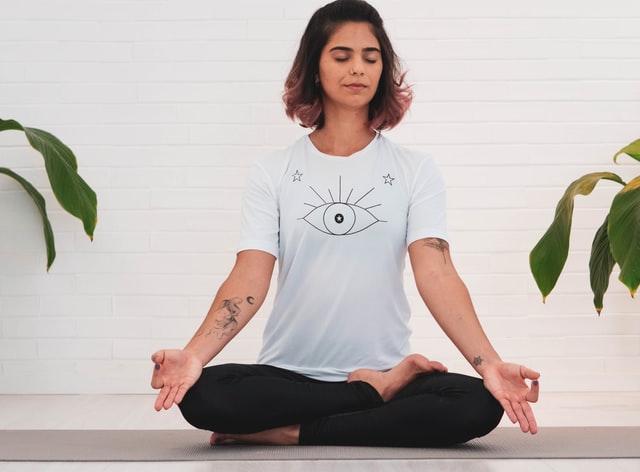
Through time the spiritual philosophy of yoga practices has developed and put a side to commercialize yoga as a way to exercise, but as history tells us, there is much more of yoga that you can integrate into your daily practice.
As humans, the mind is used to travel to the past and the future, and even though neither of those exists, the present moment is sometimes forgotten in the mind. Yoga could help you be in meditation and explore self-awareness, a synonym of mindfulness. You could allow yourself to acknowledge your body, mind, emotions, and spirit. According to the Yoga philosophy, the practice could guide you to connect with your inner energy and cosmic energy by focusing on your seven energy centers in the body, points that join the body and consciousness known as chakras. They each correspond to a certain nerve bundle and major organs. Acknowledging these energy points in your practice of yoga could make the body and emotions feel more equilibrated, as they sometimes are blocked.
Chakras
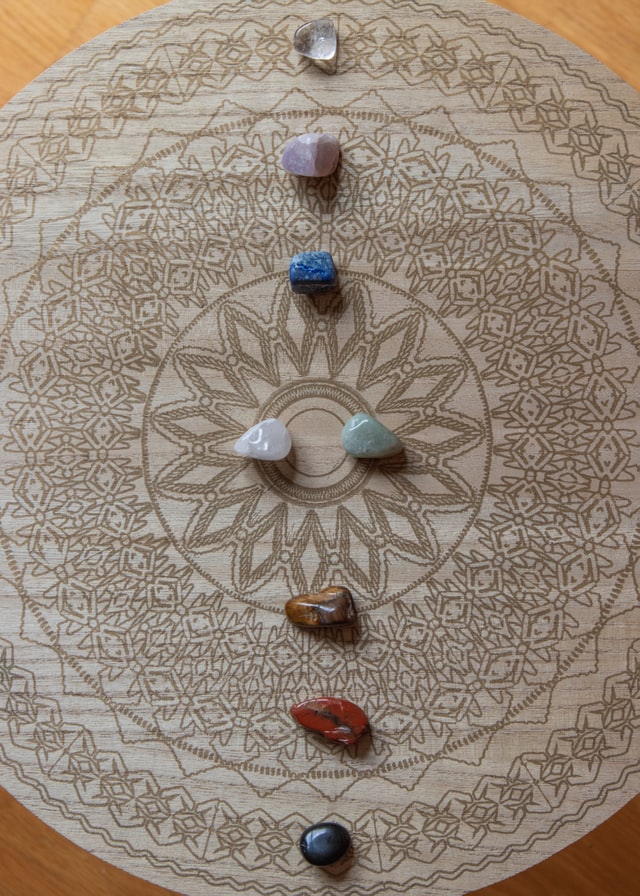
- Root Muladhara Lam: Sits around the base of the spine and can represent the foundation of the human body, our survival instincts. Emotions like stability, confidence, and independence can be represented in this chakra. When it is blocked, you could do a Tree pose or any balance pose to feel that you are working on your stability. Warrior and Mountain could also help to feel stable.
- Sexual Svadhisthana Vam: It is located in the sacrum and can control the sense of abundance, creativity, pleasure, and sexuality. Poses that open your hips will help you if this chakra is blocked, like the Pigeon or Goddess.
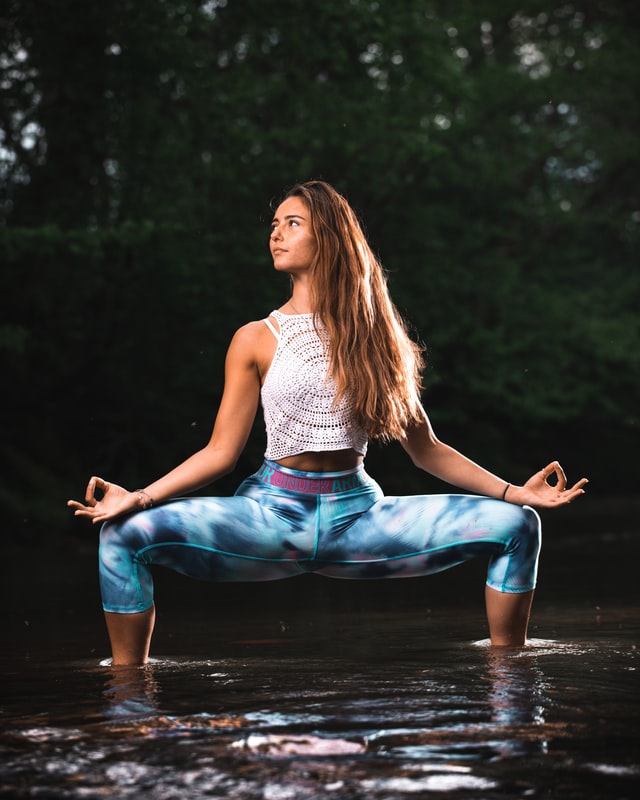
- Power Manipura Ram: Sits in the upper abdomen. When this chakra is open, you feel self-confident, self-worth and self-esteem. If you don’t feel you have confidence, then you could practice the Navasana pose.
- Love Anahata Yum: Based in the center of the chest, above the heart. It can represent the ability to give and receive love. Camel pose could be an option when feeling like working in this chakra.
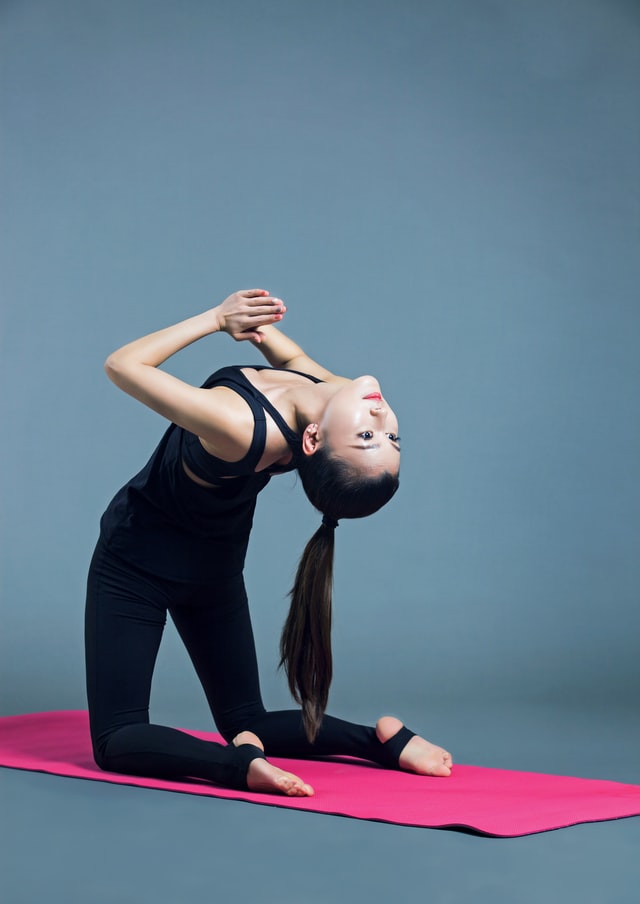
- Expression Visshuddha Hum: Located in the throat. Can control the ability to communicate. The fish pose could open this chakra if you feel like you can’t express yourself.
- Intuition Ajna Sham: Sits in the forehead between the eyes. Represents intuition, imagination, and wisdom. If you want to work on your intuition, there is specific food that could help you. For yoga, Child’s Pose could allow you to open this chakra.
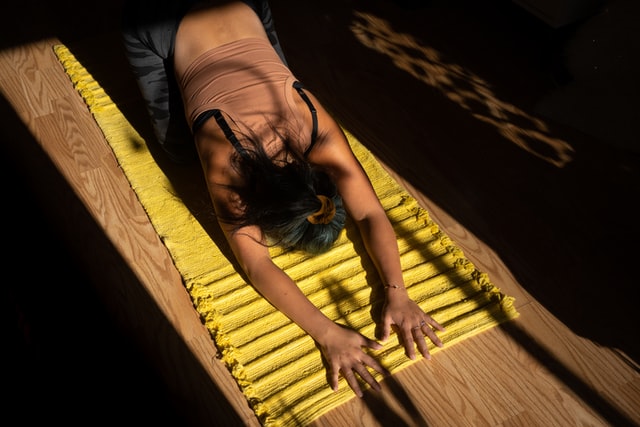
- Wisdom Sahaswara Aum: Located at the top of the head. According to yoga philosophy, this chakra is the connection with the spirit to have a higher consciousness. A Headstand pose could allow you to connect with this chakra. Just be careful as this pose is not for beginners.

Elements needed to practice yoga at home.
Now that you know the types of yoga and the real meaning of it, you can start to prepare yourself for your session of yoga. The spiritual and physical elements that you need in order to have a session to connect with yourself could be the next ones:
- Preparing the space
- Intention
- Breathing
- Postures of yoga
Preparing the space for yoga at home
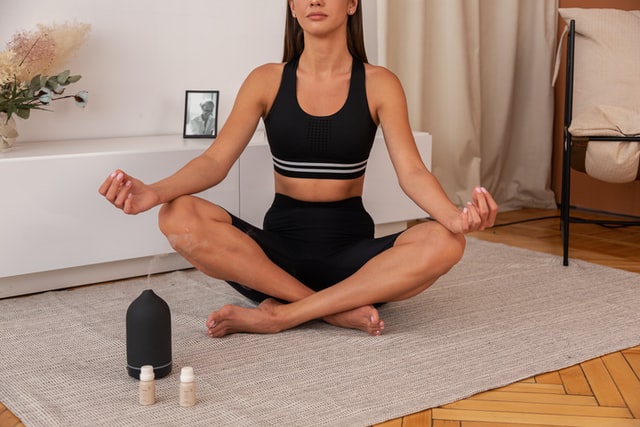
You can create a nice atmosphere in almost every space to do yoga, whether it’s in person or through virtual yoga sessions. You can choose a space in your home or perhaps while you travel. Make sure you choose a space that could isolate the noise from outside as much as you can. Some elements to add to your space could be the next ones listed:
- Music: As yoga emerges in the inner silence, not every practitioner adds music to their practice, but if you do like music and it helps you be in the present moment, music could help you concentrate and feel joy. Make a playlist. Just make sure you choose the right one to help you concentrate and feel relaxed.
- Aromatherapy: Add a candle, essential oils, or incense. There are a vast variety of aromas that could help to be more present in your practice. Mint could help you concentrate, flowers to liberate emotions, wood to stop all those thoughts in your head, lavender to relax, and lemongrass for confidence.
- Get a mat: Every yogi needs one. There are a lot of options if you choose a mat with a textured surface that will help you to maintain stability in difficult asanas, or if you sweat too much, you can also use a blanket.
- Comfortable clothes will help you stretch better and move freely. Choose any workout clothes that you have. As you practice yoga, you can identify which type of workout clothes suits you best.
- Other accessories to help you with difficult poses could be blocks and straps. If you are a beginner, they could help to enter your posture easier.
- Nature: You could benefit from the oxygen of a plant as they release oxygen and absorb carbon dioxide. Plants could help to freshen up the air and eliminate harmful toxins. They could also boost your mood, and they will look lovely in the decoration of your space.
Intention

Having an intention in every practice could allow you to start connecting with the purpose of yoga, to improve every class with your body and spirit. This intention is thought of at the beginning of the practice. You could close your eyes, have a deep breath and think about something you want to work on that specific practice because this intention can be different every time.
Setting an intention could bring awareness to a virtue, emotion, or quality you want to bring more into your life. Perhaps you want to be more patient, grateful, or joyful in your life. You could also think in a phrase, like a mantra, “I feel secure” “I feel joyful,” and you could repeat it during the practice. As the expert Joe Dispensa says, you could change aspects of yourself by being conscious and including positive affirmations to integrate them into your life through meditation and practice.
Breathing
Breathing is crucial for the practice. The way you inhale and exhale can help you start meditation while doing your postures. As adults, normal breathing is very fast, the slower you breathe the longer you live. Breathing consciously has an effect on your body, emotions, and mind. Breathing can also connect with your energy and unblock your chakras, as they are energy centers that need movement. It can also help you, as a philosophy of yoga says, connect cosmic energy with your inner energy, as we are the channels of life for energy called PRANA.
Postures of yoga
The first time doing yoga can be overwhelming, and it could be difficult to concentrate on your breathing, intention, and doing the postures right. The secret is to be persistent, and eventually, the asanas will come naturally to you. A quick guide to a primary yoga practice should have some basic elements that could change depending on the type of yoga. A basic rule is that all practices start from basic to more difficult poses mainly to prevent injuries.
NOTE: The purpose of sharing the basic steps of a yoga practice is to be more aware of what you need in a class in your home, or anywhere you go. You need to be careful if you have no experience and start doing them yourself. Do some research, and you will be able to find a yoga course that will fit your every need, and why not? even become a certified yoga teacher!
- Start with warm-up poses: Start by moving your body. The warm-up is important to start entering physically and mentally to the practice but also to heat your muscles to later postures. The cat/cow pose could help you to address movement, stretch your muscles, and liberate stress in the lower back.
- Sun Salutations A and B: These are a series of poses that are a cycle. They are very good to add in practice to start moving your body and the energy, to connect your breathing, and to have a rhythm.
- Choose a family of poses: you could think of what chakra you want to work on and choose a family of poses that could help you move the energy of that chakra, just remember that they need to have a sequence, form easy to more difficult poses, you could also put a video on YouTube, there are many that could help you.
- Savasana: Comes at the end of the practice. Some of its benefits are it can calm the nervous system, release stress and muscular tension promote higher self-awareness, spirituality, and consciousness. Before entering the posture, you could add a drop of essential oil to your neck, head-to-toe adjustments, a little massage, music, or anything you like that helps you enter the posture. You just need to lie down for 15 minutes doing nothing, just feeling the present moment.
Keep it a practice
Yoga can be challenging at the beginning as you might not feel all its benefits as you could be thinking if you are doing the right posture. However, you will gradually begin to focus on the flow, and it may turn into a wonderful meditation. Create your own yoga goals and consider how many days a week you could practice yoga. There are sports app development that might assist you in tracking your progress.

Choosing to live consciously is an everyday decision. Yoga is one of many tools that exist to start to know your body, how strong you are, and how flexible you could be, but more importantly that you experiment the meditation with your mind and start feeling the integration we all have, which is to live in the present moment being full consciousness with yourself and your surroundings. As reading this guide, you know tips that you could integrate into your life. The invitation is to keep discovering the world of yoga as a philosophy of life.
